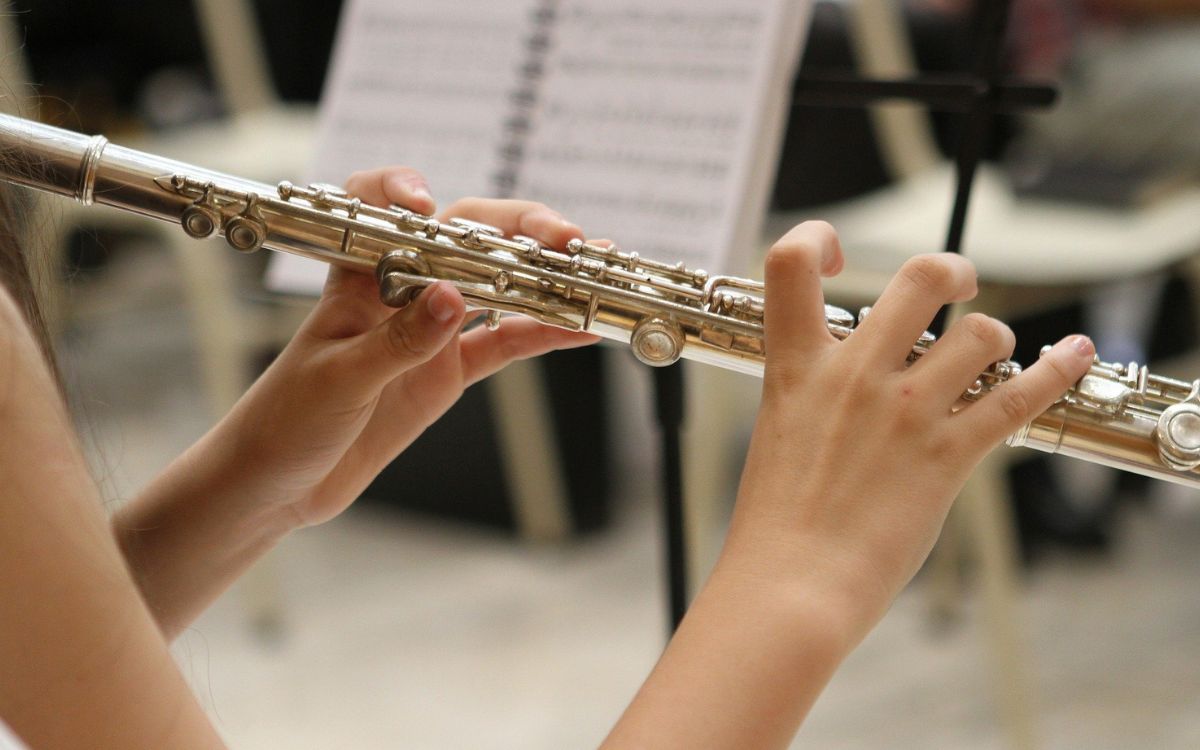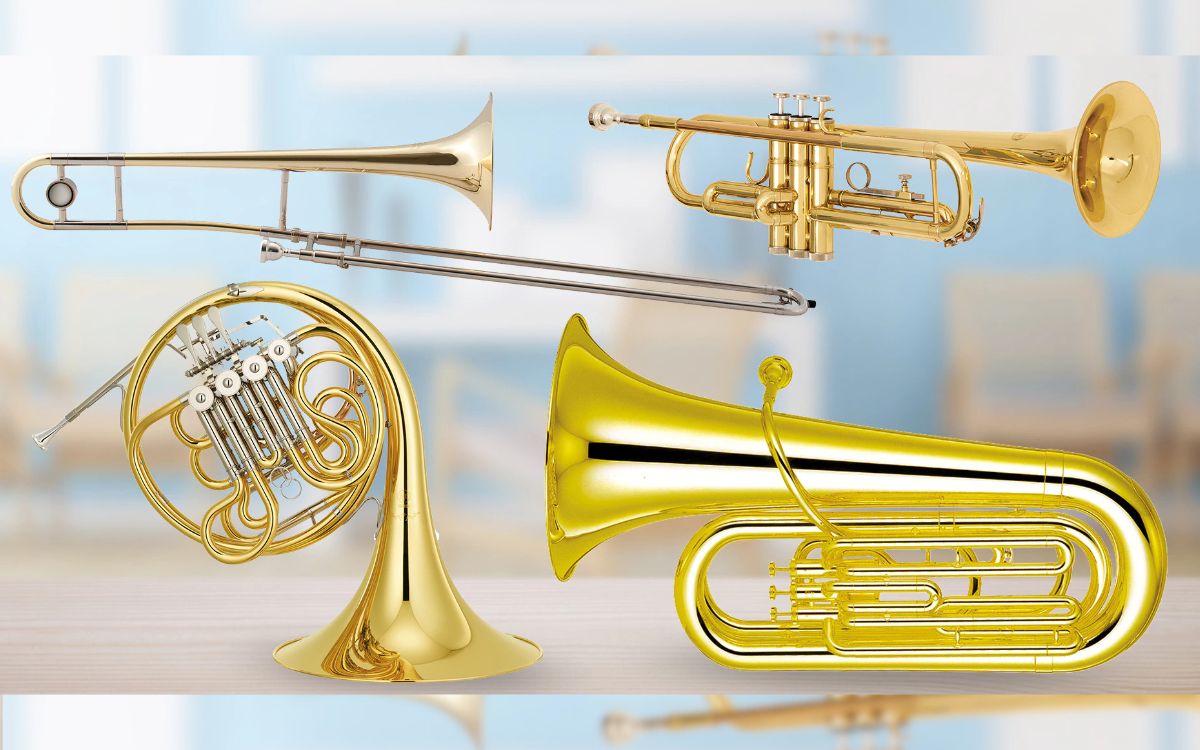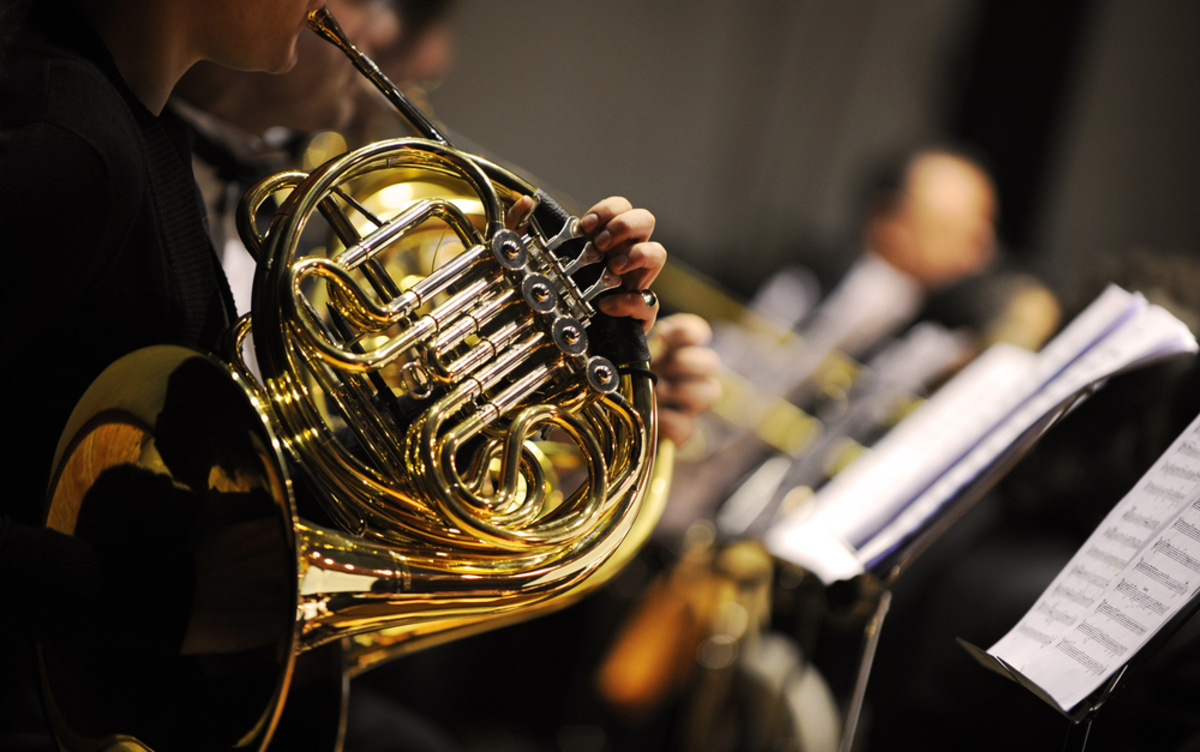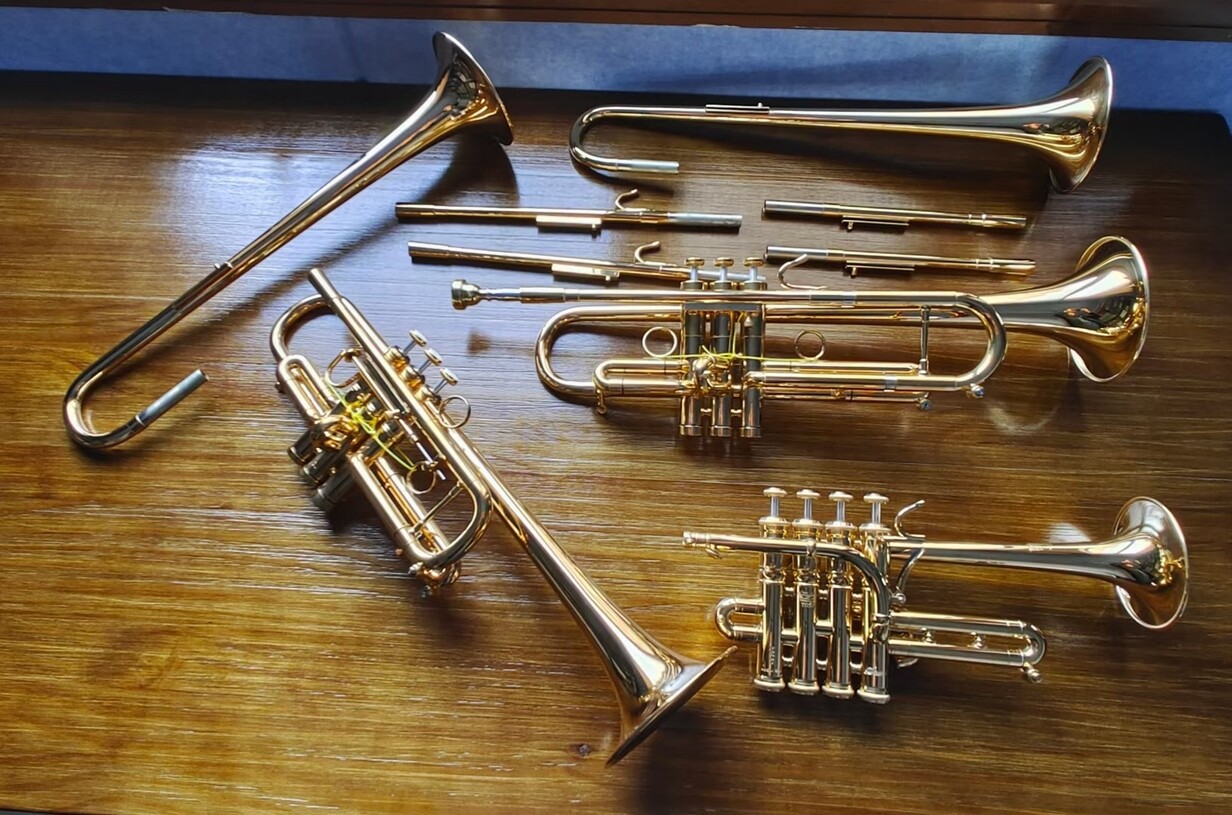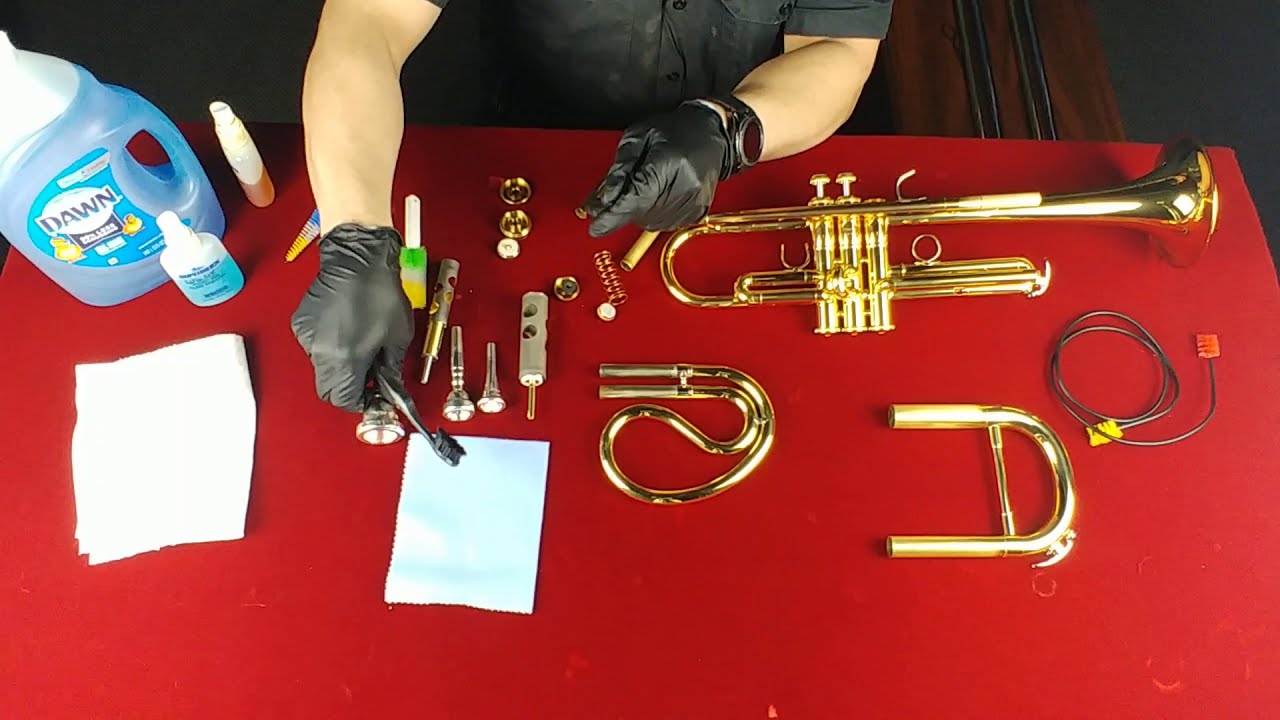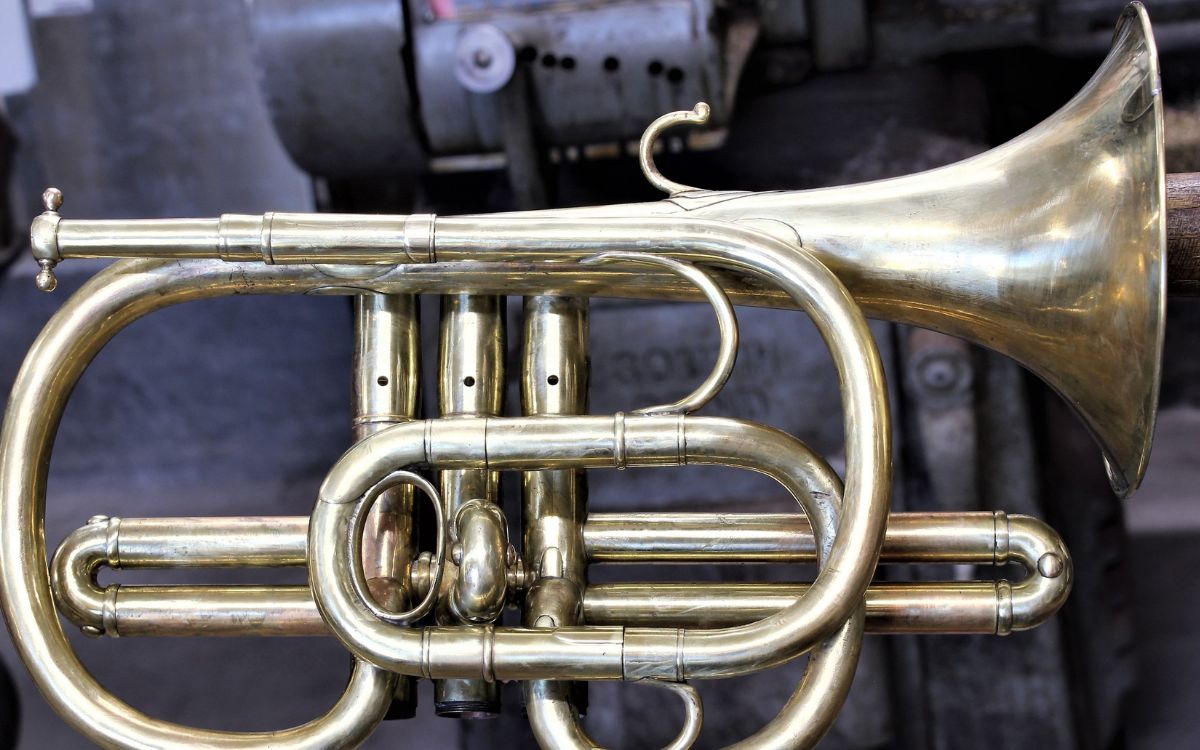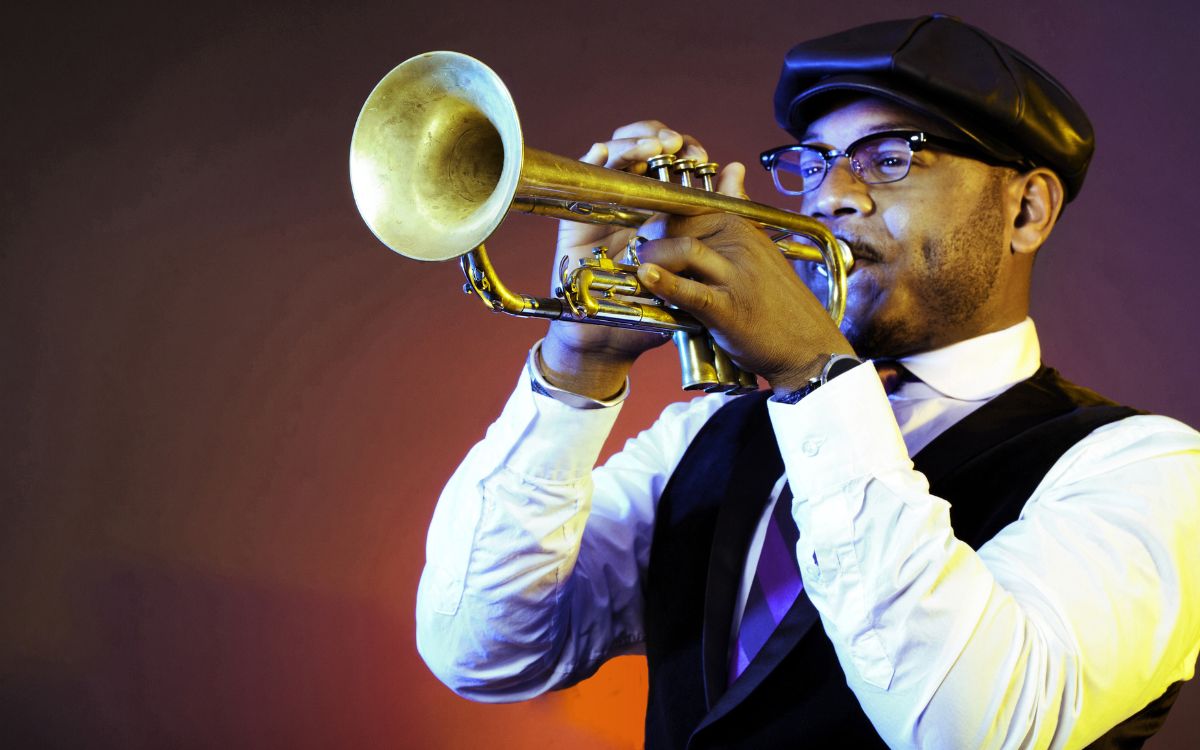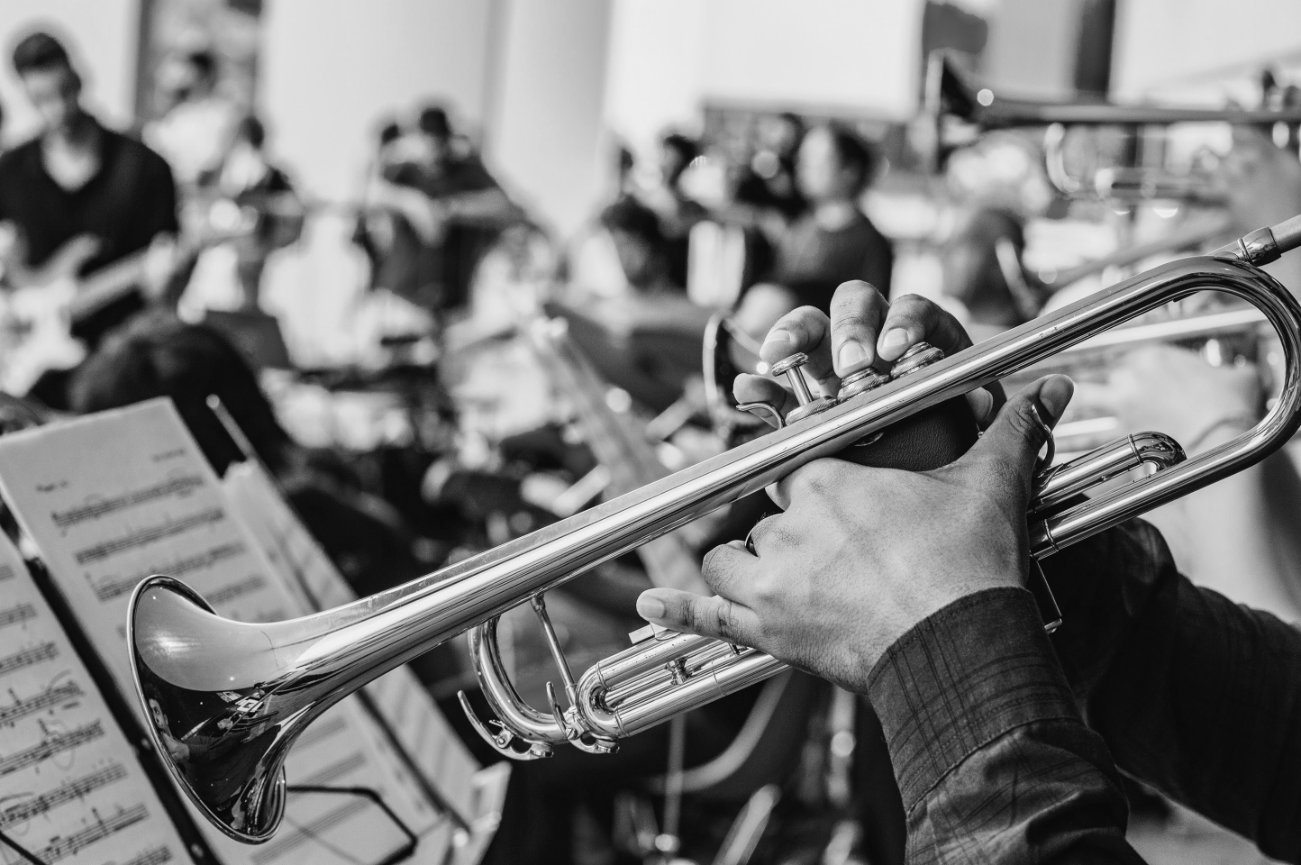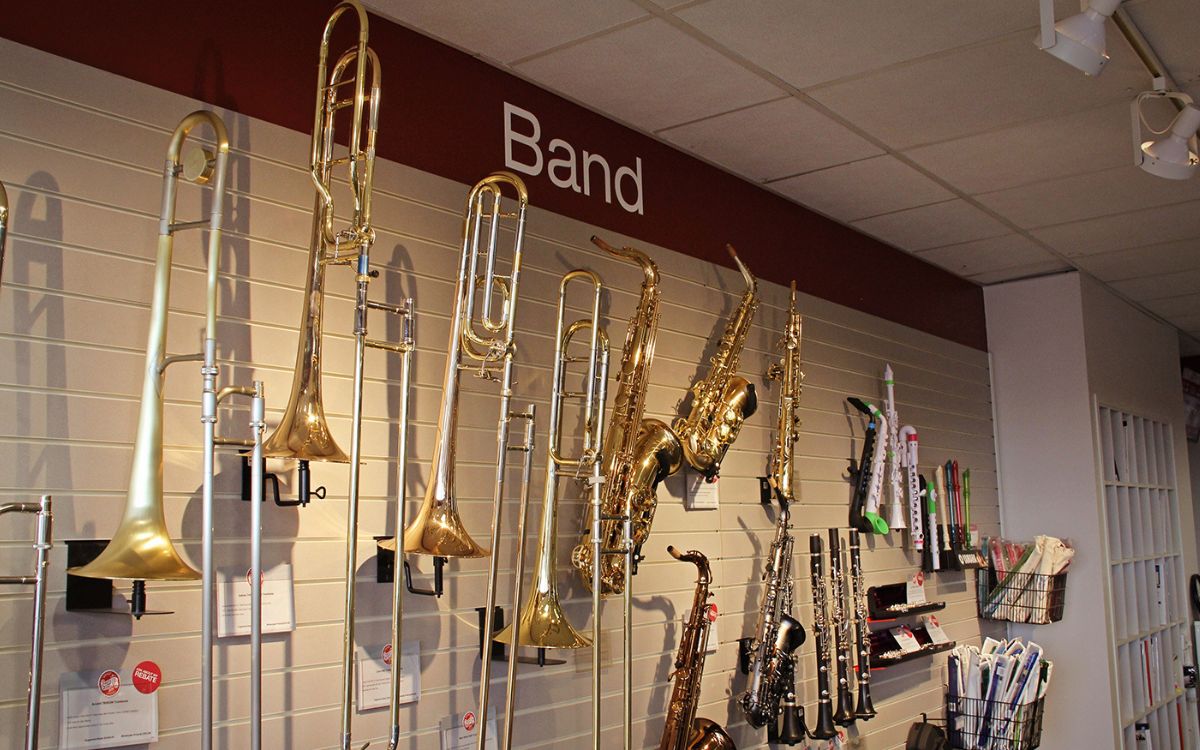Home>Instruments>Brass Instruments>How To Write For Brass Instruments
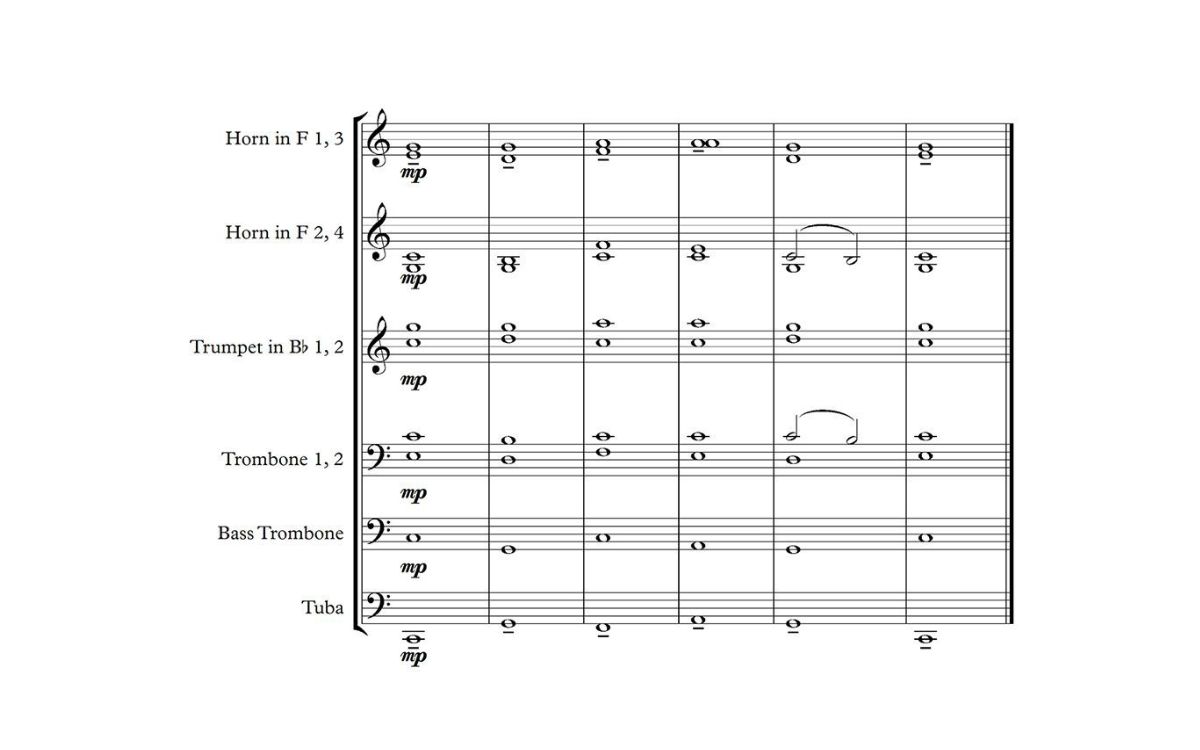

Brass Instruments
How To Write For Brass Instruments
Modified: January 22, 2024
Learn how to effectively write for brass instruments with our comprehensive guide. Master the techniques and nuances needed to create beautiful music on brass instruments.
(Many of the links in this article redirect to a specific reviewed product. Your purchase of these products through affiliate links helps to generate commission for AudioLover.com, at no extra cost. Learn more)
Table of Contents
- Introduction
- Understanding Brass Instruments
- Choosing the Right Brass Instrument to Write For
- Learning the Basics of Brass Instrument Technique
- Writing Melodies for Brass Instruments
- Incorporating Harmonies and Chords in Brass Arrangements
- Exploring Brass Instrument Ranges and Transpositions
- Utilizing Articulations and Dynamics for Brass Instruments
- Writing Solos and Features for Brass Players
- Adding Brass Section Parts to Arrangements
- Conclusion
Introduction
Welcome to the world of brass instruments! Whether you’re a seasoned composer looking to expand your musical repertoire or you’re just starting your journey in music composition, writing for brass instruments can be a rewarding and exciting endeavor. Brass instruments have a rich and powerful sound that can add depth and brilliance to any musical composition.
From the majestic sound of the trumpet to the resonant tones of the trombone and the warm timbre of the French horn, there is a wide range of brass instruments to choose from. Each instrument has its unique characteristics and playing techniques, making them versatile and expressive tools in the hands of a skilled composer.
In this article, we will explore the fundamentals of writing for brass instruments. We will discuss how to choose the right brass instrument for your composition, how to understand and utilize brass instrument techniques, and how to create engaging melodies, harmonies, and solos for brass players. Whether you’re writing for a soloist, a small brass ensemble, or a full brass section, this guide will provide you with the knowledge and techniques to craft compelling and effective brass arrangements.
So, let’s dive in and learn how to write for brass instruments!
Understanding Brass Instruments
Before diving into writing for brass instruments, it’s important to have a basic understanding of how these instruments work. Brass instruments are classified as aerophones, which means they produce sound when air is blown through them. Unlike woodwind instruments that have reeds, brass instruments create sound through the vibration of the player’s lips against a cup-shaped mouthpiece.
The most common brass instruments are the trumpet, trombone, French horn, and tuba. Each instrument has its unique characteristics, range, and sound. The trumpet produces a bright and piercing sound, often associated with fanfares and high-energy music. The trombone has a rich and warm tone, capable of producing smooth glissandos and powerful accents. The French horn has a mellow and round sound, often used in orchestral settings for its expressive capabilities. The tuba, the lowest member of the brass family, provides a deep and resonant bass sound, providing a firm foundation for brass ensembles.
Brass instruments are typically played using various techniques to achieve different effects. These techniques include tonguing, lip slurs, vibrato, and mutes. Tonguing refers to the articulation produced by the tongue against the roof of the mouth, creating different attack styles such as staccato or legato. Lip slurs involve changing the pitch smoothly by altering the embouchure while maintaining a constant airflow. Vibrato adds a subtle pitch fluctuation to the sound, creating a nuanced and expressive effect. Mutes, which are removable devices inserted into the bell of the instrument, alter the sound by changing its timbre and volume.
Understanding the capabilities and limitations of each brass instrument will greatly contribute to your composition. It’s important to be aware of the instrument’s range, as well as the ease or difficulty of certain intervals, high notes, or low notes. By doing so, you can tailor your compositions to the strengths of the brass instruments you are writing for, creating music that is both enjoyable for the players and engaging for the audience.
Now that you have a basic understanding of brass instruments, let’s move on to choosing the right instrument for your composition.
Choosing the Right Brass Instrument to Write For
When it comes to writing for brass instruments, selecting the right instrument is crucial. Each brass instrument has its unique sound, range, and technical capabilities, so choosing the right one will enhance the overall impact of your composition.
Consider the mood and style of your composition. If you want a bright and powerful sound, the trumpet might be your best choice. Its piercing sound cuts through the texture and is often associated with fanfares and energetic music. On the other hand, if you’re aiming for a warm and lyrical tone, the French horn might be the ideal instrument. Its rich and expressive sound can bring a sense of depth and emotion to your composition.
The trombone offers a versatile and flexible sound that works well in various genres. It can produce smooth glissandos, powerful accents, and blends well in both ensemble and solo settings. If you’re looking to add depth to your composition with a strong bass presence, the tuba is the instrument to consider. Its deep and resonant sound adds weight and richness to brass arrangements.
When writing for a specific brass instrument, it’s important to be aware of its range and technical capabilities. For example, the trumpet has a wide range and can play high notes with ease, while the tuba has a lower range and may not reach the same heights. Being familiar with the instruments’ limitations will help you create passages that highlight their strengths and avoid writing unplayable or awkward passages.
Consider the skill level of the players. If you’re writing for professionals or advanced musicians, you have more freedom to explore complex and demanding passages. However, if you’re writing for beginners or intermediate players, it’s important to keep the parts manageable and within their technical abilities. This will ensure that the players can perform your composition confidently and accurately.
Lastly, don’t be afraid to experiment with combinations of brass instruments. Mixing different brass instruments can create unique textures and colors in your composition. You can create beautiful harmonies and counterpoint by layering the different brass sounds or explore the contrast between the bright sound of trumpets and the warm sound of French horns.
By carefully considering the mood, style, range, and skill level, you can choose the right brass instrument or combination of instruments to bring your composition to life.
Now that you have chosen the right brass instrument, let’s delve into the basics of brass instrument technique.
Learning the Basics of Brass Instrument Technique
As a composer writing for brass instruments, it’s essential to have a fundamental understanding of brass instrument technique. This knowledge will not only help you write more effectively but also allow you to communicate your musical ideas clearly to the performers.
One crucial aspect of brass instrument technique is the embouchure, which refers to the way the player’s lips are positioned and the mouthpiece is buzzed against the lips. The embouchure directly affects the sound produced and the control the player has over pitch, tone, and articulation. Understanding the proper embouchure for each brass instrument will guide your writing, as you’ll be aware of the limitations and capabilities of the performers.
Another essential technique to be acquainted with is breath control. Brass players rely on a steady stream of air to produce a continuous sound. By understanding how breath control affects phrasing, dynamics, and articulations, you can write passages that utilize the full expressive range of brass instruments. Consider the length of phrases, the appropriate moments to breathe, and the required breath support for longer and more demanding passages.
It’s also vital to be aware of the different types of articulations and attacks used by brass players. Brass instruments can produce a wide variety of articulations, including staccato, legato, accent, and marcato. By incorporating these articulations into your composition, you can add texture and dynamics to your music.
Additionally, understanding the concept of transposition is essential when writing for brass instruments. Some brass instruments, like the Bb trumpet and the Eb alto saxophone, are transposing instruments. This means that the written notes for these instruments will sound different from what is written on the score. Being familiar with the transposition of brass instruments will enable you to notate accurately and ensure that the correct pitches are produced by the performers.
Taking the time to learn and understand the basics of brass instrument technique will establish a solid foundation for your composition. It will enable you to write music that is playable, expressive, and well-suited to the specific capabilities of brass instruments.
Next, let’s explore the art of writing melodies for brass instruments.
Writing Melodies for Brass Instruments
When it comes to writing melodies for brass instruments, there are a few key considerations to keep in mind. Melodies for brass instruments should be crafted in a way that showcases the instrument’s unique sound and expressive capabilities.
Firstly, it’s important to consider the range of the brass instrument you are writing for. Each brass instrument has its specific range, and knowing the limitations and abilities of the instrument will help you create melodies that are both playable and effective. For example, the trumpet has a bright and piercing sound, particularly suited for high notes, while the trombone has a rich and robust sound, well-suited for smooth glissandos and expressive lines.
Consider the technical capabilities of the instrument as well. Brass players can perform various techniques, such as lip slurs, trills, and quick passages. It’s essential to understand these techniques and incorporate them into your melodies where appropriate. This will not only enhance the performance but also add excitement and interest to your composition.
Keep in mind that brass instruments are often associated with bold and powerful sounds. Writing melodies that feature strong and impactful phrases can highlight the strengths of brass instruments. Think of soaring lines, dynamic leaps, and bold intervals to create melodies that grab the listener’s attention and leave a lasting impression.
Another aspect to consider is the breath control of brass players. Brass instruments require a continuous stream of air, making long phrases challenging. To ensure that your melodies are comfortable to play, provide appropriate moments for the player to breathe. This will allow them to sustain notes and phrases effectively, resulting in a more polished and cohesive performance.
Lastly, don’t be afraid to experiment with different styles and genres when writing melodies for brass instruments. Brass instruments have a wide range of versatility and can adapt to various musical contexts. Whether you’re composing a catchy jazz tune, a soaring film score, or a vibrant fanfare, the brass instruments will bring excitement and energy to your melody.
By considering the range, technical abilities, power, breath control, and stylistic elements, you can create melodies that highlight the strengths of brass instruments and create an engaging and impactful musical experience.
In the next section, we’ll explore harmonies and chords in brass arrangements.
Incorporating Harmonies and Chords in Brass Arrangements
Harmonies and chords play a crucial role in creating depth and richness in brass arrangements. Understanding how to incorporate harmonies and chords effectively will elevate your brass compositions and create a harmonically satisfying musical experience.
When working with brass instruments, it’s important to consider the inherent characteristics of the instruments. Brass instruments have a powerful and resonant sound, which allows them to create bold and impactful harmonies. Chords with open voicings, wide intervals, and strong harmonic progressions can work particularly well in brass arrangements. It’s important to experiment with different chord voicings and spacing to maximize the impact of the sound.
When constructing harmonies for brass ensembles, it can be helpful to consider the different registers and ranges of the instruments. For example, having the trumpets play a higher harmony while the trombones provide a lower supporting line can create a well-balanced and compelling brass sound. This layering technique can result in a full and lush harmonic texture.
Consider interval choices when writing harmonies for brass. Brass instruments excel at producing strong and bold intervals such as octaves, fifths, and fourths. These intervals can create a robust and powerful sound, adding grandeur and impact to your arrangements. However, don’t be afraid to experiment with other intervals to create unique and interesting harmonic progressions.
Adding dynamic variations to your harmonies is also crucial. Brass instruments are capable of producing a wide range of dynamics, from delicate pianissimos to thunderous fortissimos. Gradually building up or scaling back the dynamics in your harmonies can enhance the emotional impact of a section and add tension and release.
It’s worth noting that brass instruments can also be used to create harmonic color by incorporating extended chords or jazz voicings. These chords, such as seventh chords, ninth chords, and altered chords, can add complexity and sophistication to your arrangements. Experimenting with different color tones and tensions in your brass harmonies can result in rich and interesting textures.
Remember to listen carefully to the balance between the brass instruments and any other instruments or ensembles in your arrangement. Brass instruments have a strong sound, and it’s important to ensure that they blend well with other sections and don’t overpower the overall mix. This can be achieved by adjusting the dynamics, spacing, and orchestration of the different voices in your arrangement.
By considering the inherent characteristics of brass instruments, incorporating powerful intervals, layering harmonies effectively, adding dynamic variations, and experimenting with extended chords, you can create compelling harmonies and chords that enhance your brass arrangements and create a rich and impactful musical experience.
Next, let’s explore the importance of understanding brass instrument ranges and transpositions in your compositions.
Exploring Brass Instrument Ranges and Transpositions
Understanding the ranges and transpositions of brass instruments is crucial when composing for brass ensembles or incorporating brass parts into your compositions. Each brass instrument has its unique range, and being aware of these ranges will help you write within the instrument’s capabilities and create parts that are suitable and comfortable for the players.
Brass instruments have a wide range, varying from instrument to instrument. The trumpet, for example, has a range that spans approximately from concert F#3 to C6. On the other hand, the trombone has a broader range, from concert E2 to C5. The French horn’s range typically extends from concert Bb2 to F5, and the tuba covers the deepest notes, typically ranging from concert CC1 to F4.
When composing for brass, it’s crucial to be mindful of the tessitura, which is the range in which an instrument sounds its best and is most comfortable to play. Each instrument has a sweet spot within its range where it projects and produces the best tone quality. By writing within these sweet spots, you can ensure that your brass parts sound their best and that the players can execute the music with ease.
Another aspect to understand is the transposition of brass instruments. Some brass instruments, like the Bb trumpet and the F French horn, are transposing instruments. This means that the written notes for these instruments will sound different from what is written on the score.
For example, a written C for a Bb trumpet will actually sound as a concert Bb. Similarly, a written C for an F horn will sound as a concert F. It’s crucial to notate your music correctly and take into account the transposition of these instruments. This ensures that the correct pitches are produced when the performers read and play the music.
When writing for multiple brass instruments, it’s important to consider the ranges and transpositions collectively. For example, if you want to create a chord with a specific sonority, you may need to use different transpositions for each instrument to achieve the desired effect.
Furthermore, being familiar with the ranges and transpositions of brass instruments allows you to create effective voicings and blend the different brass sections seamlessly. By layering different instruments across their ranges, you can create harmonically rich and balanced brass arrangements.
By understanding the ranges and transpositions of brass instruments and considering them in your compositions, you can create parts that are well-suited for the performers, ensure accurate notation, and build harmonically rich brass arrangements that sound cohesive and balanced.
In the next section, we’ll discuss the significance of utilizing articulations and dynamics when writing for brass instruments.
Utilizing Articulations and Dynamics for Brass Instruments
Articulations and dynamics are crucial elements when writing for brass instruments. These musical nuances can greatly enhance the expressiveness and overall impact of your brass compositions. Understanding how to effectively utilize articulations and dynamics will allow you to bring your music to life and evoke a range of emotions through the performances.
Articulations refer to the various ways in which a note is started, sustained, or ended. Different articulations can produce a wide range of tonal and textural effects. For brass instruments, common articulations include staccato, legato, accents, and marcato. Incorporating these articulations in your compositions can add emphasis, clarity, and rhythmic interest to your brass parts.
Staccato articulation, for example, creates a short and detached sound. This can be used to add a sense of precision or playfulness to a melody. On the other hand, legato articulation is smooth and connected, creating a fluid and lyrical quality. By mixing and alternating between these articulations, you can create dynamic and engaging passages for brass players.
Dynamics play a crucial role in shaping the expression and intensity of music. Brass instruments are capable of producing a wide range of dynamics, from soft and delicate pianissimos to powerful and robust fortissimos. Utilizing dynamics effectively can create dramatic contrasts, build tension, and add depth to your compositions.
When writing for brass, be mindful of the players’ breath control and endurance. Longer and sustained phrases at high dynamic levels require more breath support and stamina. Balancing the dynamics and phrasing in a way that allows the players to breathe comfortably and execute the music with control will result in more polished and expressive performances.
Experimenting with dynamic variations within a brass section can create interesting and nuanced textures. Gradual crescendos or diminuendos across the ensemble and strategic use of dynamics to highlight specific parts or solo lines can elevate the impact of your compositions.
It’s important to notate your articulations and dynamics accurately to ensure clarity and consistency in performance. Using standard musical notations such as staccato dots, legato slurs, accents, and dynamic markings will help guide the performers and convey your intended musical expression more effectively.
By thoughtfully incorporating articulations and dynamics into your brass compositions, you can bring out the full potential of these instruments and create performances that are dynamic, expressive, and compelling.
Next, let’s explore the techniques for writing solos and features for brass players.
Writing Solos and Features for Brass Players
Writing solos and features for brass players can be a thrilling and impactful way to highlight their skills and musicality. Whether you’re composing for a single brass instrument or an entire brass section, crafting effective solos and features adds a dynamic and engaging element to your compositions.
When writing a solo for a brass instrument, it’s essential to consider the instrument’s unique characteristics and strengths. Each brass instrument has its distinct tonal qualities and technical capabilities. Understanding these qualities will guide your writing and help you showcase the instrument’s unique sound and virtuosity.
Consider the instrument’s range when writing a solo. Explore both the higher and lower registers to fully showcase the instrument’s capabilities. Additionally, take advantage of the instrument’s technical abilities, such as fast articulations, graceful slurs, and bold leaps, to create intricate and impressive solo passages.
Another consideration is the stylistic elements you wish to incorporate into the solo. Whether you’re aiming for a lyrical and expressive solo, an energetic and technical showcase, or a combination of both, tailoring your writing to reflect the desired style will enhance the impact of the solo.
When writing for a brass section, features can be an effective way to showcase the collective sound and power of multiple instruments. Features can include sections where the brass players play in unison, harmonize, or engage in call-and-response patterns. These features can create impactful moments that grab the listener’s attention and leave a lasting impression.
Consider the balance and blend within the brass section when writing features. Ensure that each instrument within the section has a chance to shine and contribute to the overall sound. Providing opportunities for different brass players to take turns in the spotlight can create a sense of camaraderie and camaraderie among the ensemble.
The dynamics and phrasing of solos and features are also crucial elements to consider. Well-placed crescendos, decrescendos, and dynamic contrasts can add drama and intensity to the performance. Pay attention to the phrasing and ensure that the solo or feature has a natural flow and a sense of musicality.
Finally, keep in mind the technical abilities and comfort level of the performers. While it’s important to push the boundaries and challenge the players, it’s equally important to provide music that is within their capabilities. This ensures that the performers can execute the solos and features confidently and with precision.
By understanding the unique qualities of the brass instrument, tailoring the style to the desired mood, creating impactful features for brass sections, and considering balance, dynamics, and the performers’ abilities, you can write solos and features that captivate and showcase the brilliance of brass players.
Now, let’s dive into the techniques for adding brass section parts to your arrangements.
Adding Brass Section Parts to Arrangements
Adding brass section parts to your arrangements can elevate the overall sound and create a powerful and dynamic musical experience. Whether you’re working with a small horn section or a full brass ensemble, incorporating brass instruments into your arrangements requires careful consideration of orchestration, balance, and the unique qualities of brass instruments.
When adding brass section parts, it’s important to think about the role they will play in the overall texture of your arrangement. Brass instruments are known for their ability to provide a strong and resonant foundation, as well as add brilliance and power to any composition. Consider whether you want the brass section to provide harmonic support, melodic counterpoint, rhythmic accents, or all of the above.
Understanding the range and capabilities of each brass instrument in the section is crucial for effective orchestration. By utilizing the full range of the section, including the complementary ranges of the individual instruments, you can create a balanced and rich sound. Pairing higher instruments like trumpets and flugelhorns with lower instruments like trombones and tubas can create a full and sonorous brass sound.
Be mindful of the dynamics between the brass section and other instrument sections in your arrangement. Brass instruments have a strong presence, so it’s important to find a balance where they can be heard clearly without overpowering other sections. This can be achieved through thoughtful orchestration, dynamic markings, and proper mixing during performance or recording.
When writing brass section parts, consider the different timbral possibilities and stylistic elements you can explore. Brass instruments are versatile and can be used effectively across a wide range of genres, from classical to jazz, and from orchestral to contemporary. Experiment with different articulations, harmonies, and rhythmic patterns to create the desired mood and style for your arrangement.
Creating interesting and dynamic brass arrangements often involves exploring different voicings and harmonies. Consider the spacing and alignment of the brass voices within the section to create a balanced and cohesive sound. Experiment with various chord voicings, inversions, and harmonic progressions to add depth and complexity to your arrangements.
Don’t be afraid to also feature individual brass players within the section. Allowing them to take turns with melodic lines, solos, or improvisation can add variety and showcase their individual talents.
As you add brass section parts to your arrangements, remember to consider the technical abilities and comfort level of the performers. Tailor the parts to their skill level, ensuring that they can execute the music confidently and with precision. This will result in a more enjoyable and polished performance.
By carefully orchestrating the brass section, balancing the dynamics, exploring different timbres and styles, and considering the technical abilities of the performers, you can create impactful and vibrant brass section parts that enhance the overall sound of your arrangements.
Now that you have a solid understanding of writing for brass instruments, it’s time to put your knowledge into practice and explore the endless possibilities of brass composition. So grab your pen, unleash your creativity, and let the brass instruments soar!
Conclusion
Writing for brass instruments opens up a world of possibilities for composers and arrangers. The rich and powerful sound of these instruments can add depth, brilliance, and excitement to any musical composition. By understanding the fundamentals of brass instrument technique, choosing the right instruments, and harnessing the expressive potential of brass arrangements, you can create music that captivates and engages listeners.
Throughout this article, we have explored the various aspects of writing for brass instruments. We have delved into understanding their unique characteristics, selecting the appropriate instrument, and learning about the basics of brass instrument technique. We have also discussed how to write melodies, harmonies, solos, and features that highlight the strengths of brass instruments, as well as explored the importance of articulations, dynamics, and orchestration in brass arrangements.
No matter the genre or style of music you are working with, incorporating brass instruments into your compositions can bring them to life. The versatility of brass instruments allows them to be utilized in a wide range of musical settings, from orchestral and chamber music to jazz, pop, and beyond.
As you continue to develop and refine your skills in writing for brass instruments, take the time to listen to and study the works of great composers who have mastered the art of writing for brass. Pay attention to the nuances and techniques they employ, and use them as inspiration for your own compositions.
Remember to find a balance between pushing the boundaries and writing within the capabilities of the performers. While it’s important to challenge the players, it’s equally important to provide music that is enjoyable to play and that allows them to perform at their best.
So, whether you’re crafting a vibrant brass fanfare, a soaring orchestral piece, or a lively jazz arrangement, keep exploring, experimenting, and honing your craft. Writing for brass instruments is a rewarding and fulfilling endeavor that allows you to create music with power, passion, and impact.
Now, armed with your newfound knowledge, it’s time to take your compositions to the brass section. Embrace the beauty and brilliance of brass instruments, and let your musical imagination soar!

